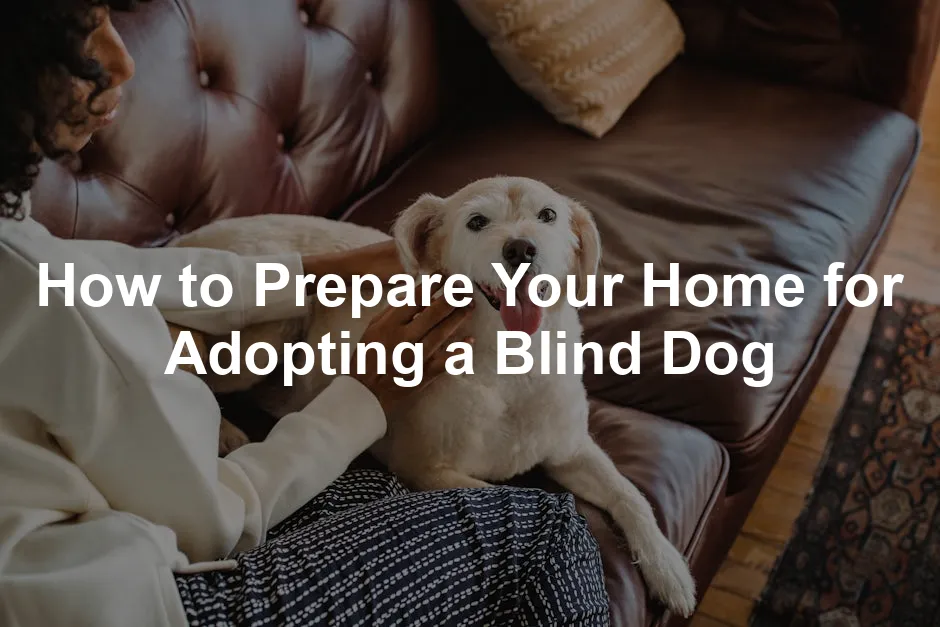Introduction
Adopting a blind dog is a decision filled with compassion and love. These furry companions may face unique challenges, but they also bring immense joy. Caring for a blind dog requires special considerations, but the rewards can be profound. Imagine the happiness they’ll bring as they snuggle up next to you, relying on their other senses to navigate the world.
Blind dogs often adapt remarkably well to their surroundings. They learn to rely on their keen sense of smell and excellent hearing. However, as a responsible pet parent, preparing your home is essential. This article provides comprehensive guidance on making your environment safe and welcoming for your new blind friend. From understanding their needs to practical modifications, we’ve got you covered!
Speaking of making your home comfortable, have you considered investing in a Furhaven Pet Dog Bed with Removable Cover? It’s perfect for providing a cozy spot for your blind dog to rest and feel secure.
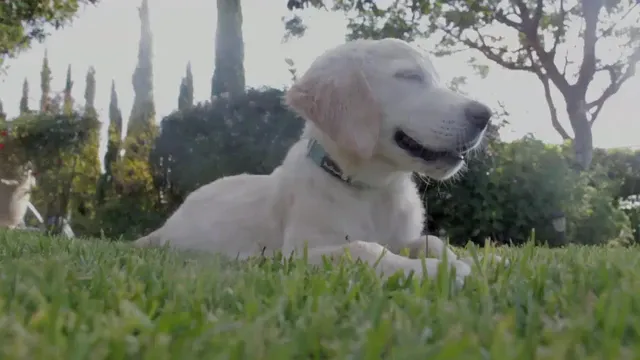
Understanding Blind Dogs
What Does It Mean for a Dog to Be Blind?
When a dog is blind, it may have lost its vision due to various reasons. Some dogs are born blind due to genetic factors, while others may lose their sight as they age. Common causes of blindness include cataracts, glaucoma, and retinal diseases. This can be a natural part of aging or a result of injury.
Many misconceptions surround blind dogs. Some people mistakenly believe that blind dogs can’t lead fulfilling lives. In reality, these dogs can thrive with the right support. They often develop heightened senses, allowing them to experience life in unique ways. Blind dogs can learn commands, navigate their homes, and enjoy playful adventures just like their sighted counterparts.
It’s important to remember that every blind dog is different. Their adaptability varies based on individual personalities and experiences. Some may adjust quickly, while others might take time to become comfortable. Understanding these nuances is crucial for providing the best care possible.
Additionally, blind dogs can develop strong bonds with their human companions. They rely on you for guidance and comfort. With a little effort and patience, your new furry friend will flourish in their new environment. This journey not only enriches their lives but also yours, creating a heartwarming companionship that transcends visual limitations.
To enhance that bond, consider using a PetFusion Ultimate Dog Bed. It’s designed for comfort, giving your dog a perfect haven to relax and feel safe.
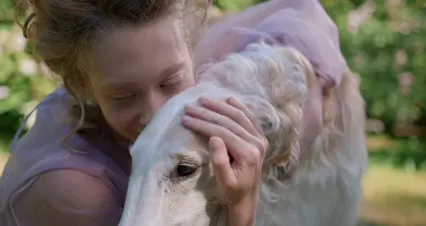
Adaptability of Blind Dogs
Blind dogs are remarkable creatures. They often surprise us with their ability to adapt. These furry pals rely on their other senses to navigate their surroundings. Their sense of smell is like a superhero power! Dogs have up to 300 million olfactory receptors, compared to our mere 5 million. This means they can detect scents we can’t even imagine.
Hearing is another vital sense for blind dogs. They can pick up sounds from far away, helping them understand their environment. Many owners report that their blind dogs learn to navigate their homes with ease. They become experts in using their noses and ears to find their way around.
Take Emma, for example. She adopted a blind Labrador named Max. At first, Emma worried about how Max would adjust. But, to her surprise, Max quickly learned the layout of their home. He used his nose to find his favorite toys and food bowl. Emma even noted, “It’s like he can see with his nose! He might bump into a few things at first, but he soon knows where everything is!”
Another great story comes from Tom, a proud dad to Bella, a blind Beagle. Tom shared, “Bella had a bit of a rocky start. But after a few days, she was confidently exploring our yard. She even started chasing squirrels! I never thought a blind dog could be this adventurous.”
These heartwarming stories show how blind dogs can flourish in loving homes. They may not see the world as we do, but they experience joy in other ways. Their adaptability is a testament to their resilience and spirit. With a little time and care, blind dogs become cherished family members, teaching us valuable lessons about love and perseverance.

Preparing Your Home for a Blind Dog
Create a Safe Environment
Creating a safe environment for your blind dog is crucial. First, you need to clear pathways. Imagine navigating a maze with obstacles at every turn. It sounds frustrating, right? That’s how a blind dog feels when your home is cluttered. Decluttering is your top priority. Remove any unnecessary items from floors and hallways. This simple act can prevent accidents and give your dog the freedom to explore.
Next, consider your dog’s height. Items like shoes, bags, and even toys can create unexpected hurdles. Make sure these objects are out of reach. You want your pup to feel empowered, not hindered. A clean, spacious environment encourages confidence and exploration.
Another essential aspect is the furniture layout. Blind dogs rely heavily on memory. Keeping a consistent furniture arrangement helps them memorize the space. If you frequently rearrange furniture, your dog might get confused. Imagine coming home and finding your favorite chair has suddenly disappeared. Not fun, right?
Maintain a steady layout to help your dog learn their surroundings. If you need to move furniture, do it gradually. Introduce changes one piece at a time and monitor your dog’s reactions. Their ability to navigate will improve with time and practice.
Don’t forget about potential hazards! Perform a thorough hazard check. Look for sharp edges, gaps under furniture, or anything that could pose a risk. Block off stairs using baby gates or barriers. Keep dangerous items, like cleaning supplies, out of reach. Safety first!

Also, consider using a PetSafe Easy Walk Dog Harness for walks. It provides better control, ensuring your blind dog has a safe outing.
Utilize Sensory Aids
Textured mats can be a game-changer for blind dogs. These mats help them recognize different areas in your home. Place non-slip mats in key locations, like doorways and near food bowls. The texture will guide them, allowing for smooth navigation.
Consider sound cues as well. Use wind chimes or bells on other pets to help your blind dog locate them. These sounds can create a comforting environment. Your dog will appreciate knowing where their furry friends are at all times.
Incorporating these sensory aids can make a significant difference in your dog’s daily life. With a little effort, you can ensure your home is a safe haven for your blind dog, providing them comfort and confidence as they adapt to their new life with you.
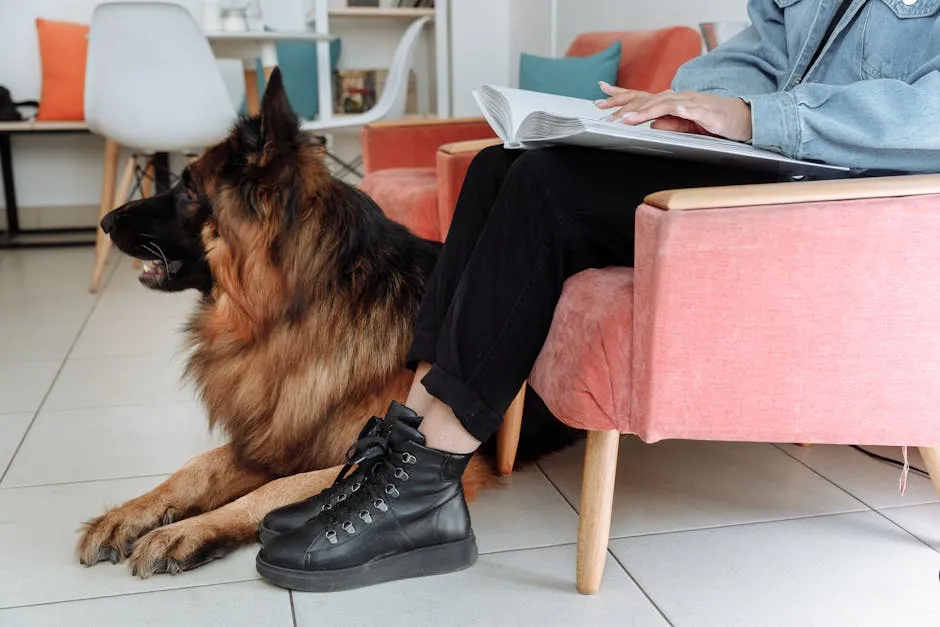
Hazard Check
Before welcoming a blind dog into your home, a thorough hazard check is essential. Your goal is to create a safe, comfortable space where your new furry friend can thrive without fear of injury. Let’s break it down into a handy checklist.
- Sharp Edges: Inspect furniture for sharp edges. Use corner covers or foam padding to cushion these spots. This simple adjustment can prevent painful bumps.
- Stairs: Stairs can be daunting for a blind dog. Install baby gates at the top and bottom to restrict access. If your home has multiple levels, take extra precautions.
- Loose Rugs: Loose rugs can be a tripping hazard. Secure them with non-slip pads or remove them altogether. Consistency in flooring helps your pup navigate confidently.
- Electrical Cords: Tidy up those pesky cords! Use cord covers to minimize the risk of tangles. A blind dog may not see these hazards, leading to potential accidents.
- Household Items: Keep items like shoes, bags, and toys off the floor. Blind dogs rely on their memory and scent. Clutter can confuse them and lead to falls.
- Dangerous Chemicals: Store cleaning supplies and chemicals up high or in cabinets with child-proof locks. Accidental exposure can be harmful.
- Open Windows and Balconies: Ensure all windows have secure screens. Close off balconies or open spaces where a curious dog could easily tumble.
- Pools and Water Hazards: If you have a pool, install a fence. Blind dogs won’t see the edge and could fall in. Supervise any outdoor playtime to keep them safe.
- Hazardous Plants: Some houseplants are toxic to dogs. Research and remove any potentially harmful flora from your home.
- Noise Disturbances: Be mindful of loud appliances or sudden noises. These can startle your dog, causing anxiety. A calm environment helps them feel secure.
By addressing these hazards, you lay the groundwork for a safe haven. Your blind dog deserves a space where they can roam freely and confidently, without fear of injury. Remember, the more proactive you are, the more enjoyable life will be for both of you!

Utilize Sensory Aids
Textured mats can significantly aid blind dogs in navigating their surroundings. These mats create a tactile map, helping your pup distinguish different areas. For example, place a textured mat at the entrance of doors or near food bowls. This gives them a physical cue, making it easier to orient themselves within your home. Non-slip mats are ideal, ensuring safety while providing a sensory guide. Consider using variety in textures to mark specific areas, such as a soft mat in their sleeping zone and a different texture in play areas. This clever use of materials helps your dog learn their environment confidently, making them feel secure and at home.
Sound cues also play a crucial role in helping blind dogs navigate. Implementing wind chimes near doors creates an auditory guide, letting your dog know when they are entering or exiting a space. Additionally, consider putting bells on your other pets. This allows your blind dog to locate them easily, reducing stress during playtime or family gatherings. These sound cues become like a language, guiding your dog through their daily routine. By incorporating these sensory aids, you not only enhance their safety but also enrich their lives, making every day a little brighter for your blind companion.
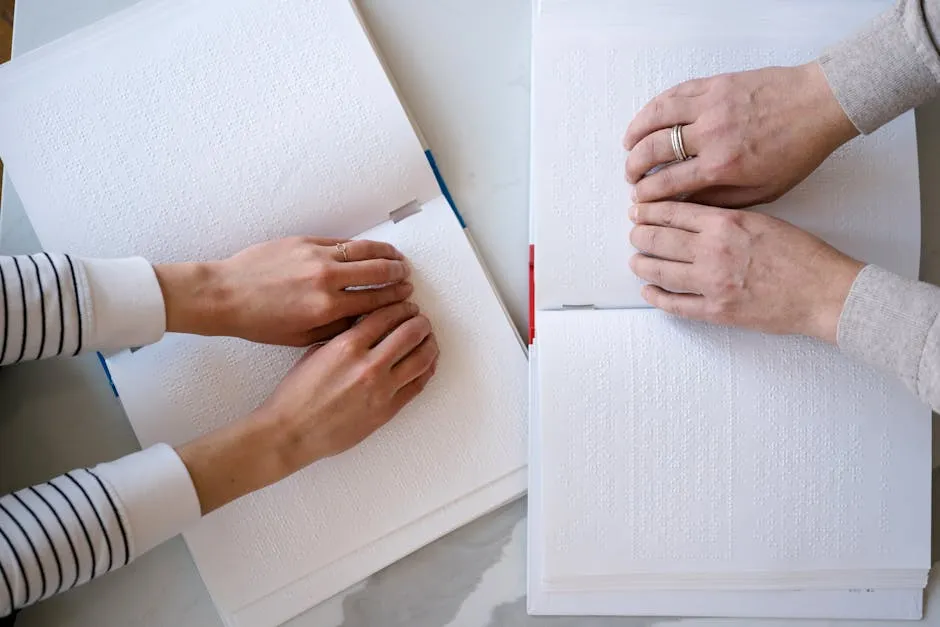
Training and Communication
Training a blind dog can be a rewarding experience, fostering a strong bond between you and your furry friend. Start with essential commands that provide guidance and safety. Key commands include “step up,” “step down,” “stop,” and “back.” These words help your dog navigate their environment confidently.
Begin by using treats to encourage positive reinforcement. Say the command clearly, then guide your dog gently. For example, if teaching “step up,” position your dog at the bottom of the stairs. Use your hand to lead them up while saying the command. Repeat this consistently, pairing the action with praise and treats.
It’s essential to maintain a calm and patient demeanor. Blind dogs rely heavily on vocal cues and touch. As you train, incorporate tactile signals. This can be a gentle tap on their side, signaling them to turn or change direction. Consistency is key—use the same commands and hand signals every time.
Additionally, regular practice helps reinforce learning. Incorporate training into daily routines, like mealtime or walks. This not only aids their navigation but also keeps their mind engaged. Remember, patience is vital. Each dog learns at their own pace, so celebrate small victories along the way!
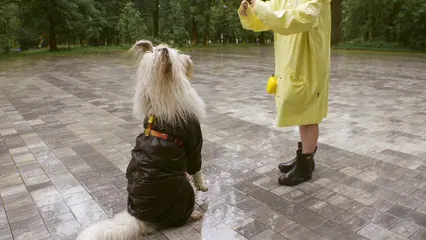
And hey, if you want to make training more fun, add a Dog Training Clicker to your toolkit! It’s a fantastic way to reinforce positive behavior and keep training sessions engaging.
Ongoing Care and Considerations
Regular Veterinary Visits
Routine veterinary check-ups are vital for the health and well-being of blind dogs. Just because a dog can’t see doesn’t mean they don’t require regular medical attention. In fact, these visits can catch underlying issues that may not be immediately apparent.
During a vet visit, expect a thorough examination. Your vet will likely check for any eye-related conditions, even if your dog is already blind. For instance, conditions like glaucoma or cataracts can still affect a blind dog’s overall health. Regular vet visits can ensure that any other health concerns are addressed promptly.
Some blind dogs may require medication or special treatments, especially if they retained partial vision or have other health issues. For instance, a dog with glaucoma might need ongoing eye drops. Understanding your dog’s unique health needs is essential.
Moreover, it’s essential to establish a good relationship with your veterinarian. They can provide guidance on how to adjust your dog’s health care as they age. Regular check-ups will help ensure that your blind dog leads a happy, healthy life. After all, a sound medical plan is a cornerstone of happiness for any dog, blind or not!
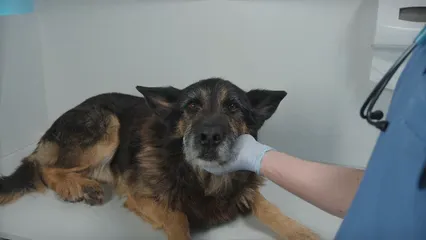
To support your blind dog’s health, consider adding a high-quality diet like Science Diet Adult Sensitive Stomach Dog Food. It ensures they receive the nutrition they need to thrive.
Daily Life with a Blind Dog
Creating a daily routine for your blind dog is not just beneficial; it’s a game-changer. A structured schedule provides security and predictability. Start by maintaining consistent feeding times and walks. This helps your dog feel grounded in their environment.
Incorporate sensory cues into your routine. Use verbal commands and touch to guide your dog. For example, always say “dinner time” when you feed them. This reinforces the association between the verbal cue and the action.
Patience is paramount during the adaptation process. Give your dog time to navigate their surroundings. Expect a few bumps along the way—literally! If your dog bumps into something, gently redirect them with your voice, allowing them to learn without fear.
Encourage them to explore safely. A blind dog often learns by trial and error, so let them discover their space at their own pace. With time, they will grow more confident. This patience and understanding can create a beautiful bond between you and your furry friend.
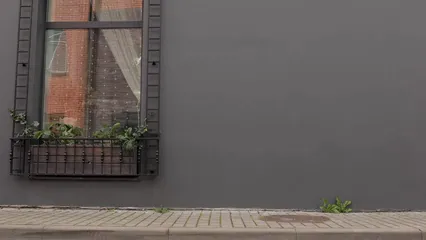
And for outdoor adventures, don’t forget a PetSafe EasySport Dog Life Jacket to ensure your dog’s safety while swimming. It’s a great way to let them enjoy the water without worries!
FAQs
Can blind dogs still play and exercise?
Absolutely! Blind dogs can engage in play through their other senses. Their keen sense of smell helps them locate toys, while their excellent hearing lets them track sounds, making playtime just as fun. Use squeaky toys or toss balls that make noise to enhance their play experience. Engaging them in scent games can also provide mental stimulation and fun. With some creativity, your blind dog can enjoy a fulfilling playtime just like any other pup!
Please let us know what you think about our content by leaving a comment down below!
Thank you for reading till here 🙂
To learn more about how to prepare your home for adopting a blind dog, check out this guide on preparing your home for adopting a blind dog.
All images from Pexels

